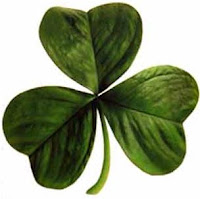Dziś zajmiemy się zagadnieniem, które stanowi zmorę wielu uczniów - rzeczownikami niepoliczalnymi...Co oznacza stwierdzenie, że dany rzeczownik jest niepoliczalny? Otóż, jak sama nazwa wskazuje, jest to rzecz/pojęcie, którego nie jesteśmy wstanie fizycznie policzyć - potrzebujemy innego przedmiotu (szklanki - glass; tabliczki - bar, sztuki - piece, etc.) aby opisać ilość. Myślicie, że w języku polskim nie mamy rzeczowników niepoliczalnych? Owszem, mamy :) Przykład?
Potrzeba wiele sztuczek by przyciągnąć uwagę (X uwagi X) uczniów.
Czy mówiąc po polsku użylibyście liczby mnogiej rzeczownika 'uwaga' ? Raczej nie....
Inne przykłady:
Nauka języka wniosła wiele dobrego w ich życie. (X życia X)
Pisarze często piszą o miłości. (X miłościach X)
Uwielbiam kawę. (X kawy X)
Czy jednak nie jest możliwe użycie tych słów w liczbie mnogiej? Owszem, możemy powiedzieć 'uwagi', życia', 'miłości', itd. jednak, albo zmieni nam się znaczenie słowa (jak w przypadku słowa uwaga/uwagi), albo kontekst musi być odpowiedni, abyśmy mogli użyć takich form (np. Uwielbiam kawę/kawy Brazylii). Podobnie jest w języku angielskim, ale to już zagadnienie dla uczniów bardziej zaawansowanych i temat na inną dyskusję.
Aby łatwiej zapamiętać które wyrazy są niepoliczalne, możemy podzielić je na pewne kategorie :
1. Food
food - jedzenie
bread - chleb
flour - mąka
water - woda
coffee - kawa
tea - herbata
wine - wino
milk - mleko
cheese - ser
butter - masło
sugar - cukier
salt - sól
soup - zupa
pasta - makaron
spaghetti - spaghetti
fruit - owoc/owoce
meat - mięso
fish - ryba (jako potrawa)
chicken - kurczak (jako potrawa)
honey - miód
 |
| bread |
2. Toilet-connected liquids/sustances
shampoo - szampon
toothpaste - pasta do zębów
soap - mydło
powder - puder
3. Abstract nouns (czyli 'rzeczowniki abstrakcyjne')
love - miłość
courage - odwaga
knowledge - widza
advice - rada
information - informacja
news - wiadomości
work - praca
 |
| news - wiadomości |
4. Everyday life objects
clothing - ubrania
furniture - meble
baggage/luggage - bagaż
grass - trawa
paper - papier
hair - włosy
money - pieniądze
(tak, tak... w języku angielskim
pieniędzy nie można policzyć! ;)
 |
| money |
 |
| Hair is also uncountable! |
Jakie są gramatyczne 'konsekwencje' faktu, że dany rzeczownik jest niepoliczalny?
1. Do rzeczownika niepoliczalnego nie dopisujemy końcówki 's' (którą zazwyczaj stawiamy na końcu rzeczownika, aby utworzyć liczbę mnogą), np.
X You have a lot of moneys X
You have a lot of money.
2. Traktujemy rzeczownik niepoliczalny jak rzeczownik w liczbie pojedynczej, a więc czasownik mu towarzyszący również musi być w liczbie pojedynczej, np.
This furniture is so shabby! (Te meble są tak zużyte!)
X This furniture are so shabby! X
X Your hair are wonderful X
Your hair is wonderful! (Twoje włosy są wspaniałe!)
3. Nie możemy postawić przed rzeczownikiem niepoliczalnym rodzajników nieokreślonych - a / an.
Możemy za to postawić rodzajnik określony 'the' lub 'some' (jakąś/jakieś)
X I have an advice for you. X
I have (some) advice for you.
4. Z rzeczownikami niepoliczalnymi stosujemy następujące określenia ilości :
much - dużo
a little - trochę
little - mało (niewystarczająco)
a lot of/lots of - dużo
no - żadnego
some - jakaś/jakieś
(w zdaniach twierdzących oraz pytaniach, w których
spodziewamy się odpowiedzi twierdzącej, np. propozycjach poczęstunku)
any - jakieś/żadnego
(w pytaniach i zdaniach przeczących)
5. Rzeczowników niepoliczalnych nie możemy liczyć..więc błędem jest stosowanie liczebników z tymi rzeczownikami :
X I've heard two great informations! X
I've heard two great pieces of information!
X Two breads, please! X
Two loaves of bread, please!
* Przyjęło się mówienie 'two coffees, please', 'two beers, please!', etc. Umownie rozumiemy przez takie zdania : 'two cups of coffee', 'two mugs of beer'.
Jeśli chcemy policzyć rzeczoniki niepoliczalne, posługujemy się takimi słowami jak :
a piece of / two pieces of ... - sztuka / sztuki ...
loaf (pl. loaves) - bochenek / bochenki
bottle- butelka
tin/can - puszka
carton - karton
slice - plasterek
tube - tubka
glass - szklanka
bag - torebka
jar - słoik
bar - tabliczka
a / two litre(s) of - litr/twa litry ...
a/ three kilo(s) of - kilo/ trzy kilo ...
Tyle tytułem teorii...Jeśli wydaje się Wam trudna - keep it simple! Pamiętajcie, że dana rzecz występuje tylko w liczbie pojedynczej i z tego tytułu występują pewne konsekwencje...W następnym poście pojawią się ćwiczenia sprawdzające wiedzę praktyczną! C u soon!































